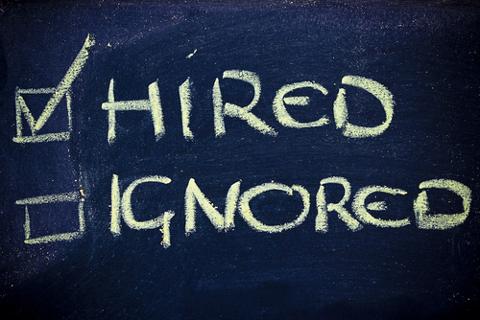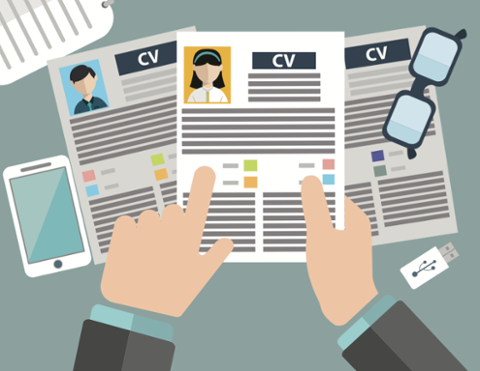If you’re readying to graduate from college, you know that finding and applying for jobs is a challenge. Even if you find the right opportunity in the right city, you face the daunting task of applying. However, there are ways to craft your résumé that can frame your education and experience—whatever the latter—in the best possible way for recruiters and hiring managers. Before you sit down to actually write your résumé, reach out to a couple of friends and make sure they’re willing to read it and provide notes (and point out any errors). Everybody makes typos, and after multiple drafts it’s often hard to spot any inconsistencies in your professional narrative—that’s why you need an impartial pair of eyes to proofread. By looping in folks at the beginning of the process, you boost their willingness to actually read your writing; nobody likes to be ambushed with a last-minute request (“Please! I need to apply for this job tonight!”). And don’t wait until you’re an hour away from submitting your application to send that résumé draft around. If you’re about to graduate, you’ve hopefully spent the past few years gaining as much experience as possible. Our previous articles
have detailed the possible ways to level up, including part-time work, internships, and even research projects under the purview of a professor. Although many budding technology professionals dearly want to intern at prestigious firms such as Google and Facebook, don’t neglect the opportunity to work at smaller firms where you might end up with a lot of responsibility (and the chance to work on cutting-edge projects).
First Step
So you have your readers in place. Next, sit down with a piece of paper (or if that’s too old-school, your favorite note-taking app) and break down your marketable
skills. This includes knowledge of programming languages, frameworks, and platforms; it might also include “softer” skills such as management and communication. Be exhaustive; this list will end up narrowed down considerably when it comes time to actually write the résumé.
Next Up…
After that, it’s time to list your
accomplishments. This isn’t the same thing as your experience, although the two will necessarily overlap; this is everything you’ve done in a professional context that’s had a meaningful result. For example, if you spent your last internship killing bugs in a mobile app, you definitely want to list that project and how it turned out. The key here is that the results are quantifiable in some way.
Tailoring Your Work
Take another look at the job you want. What is your prospective employer looking for? What skills do they want a successful candidate to have? Whatever their desires, we can tell you one thing: if you submit a generic résumé in response to their posting, the chances of a rejection rise exponentially. You need to customize your résumé to the job as best you can. For example, if the job posting says that the job will require you to help develop an application for order processing and inventory maintenance, you should sort through your experience to find something that maps appropriately to that, and list it either in your Summary section (if you have a Summary) or as part of your experience. In this case, you could state something along the lines of, “Helped develop a vendor information and order processing app that reduced operating costs.” Even if your background and projects don’t map perfectly to the job requirements, you can still demonstrate that you have equivalent experience, or an aptitude to learn; employers will sometimes hire tech pros who don’t have the exact skill set, but have demonstrated an aptitude for critical thinking and adopting new abilities quickly. A job posting for a web developer may list certain languages and frameworks as a requirement; if you don’t have those, but you’ve built websites, you can highlight those projects and hope the employer is willing to let you learn the specific skills they want on the job.
Keep It Simple
Many tech pros looking for their first job make a common mistake on their résumé: they list too much. It’s not only unnecessary to list every skill you’ve ever learned and job you’ve had (going all the way back to that middle school gig as a cashier), but it can backfire by making you look desperate. (Some candidates make the added, unforced error of listing a skill they don’t really have, which can lead to spectacular problems if a prospective employer asks them to demonstrate its use during an interview.) Instead, list skills and experience relevant to the job at hand. Remember that recruiters and hiring managers will spend just a few seconds scanning your materials; you want them to see only the important things.
Don’t Get Cute
Recruiters and hiring managers appreciate résumés that follow a specific, professional format—if you need help with that, there are
plenty of guidelines and templates
that can assist. But resist the urge to get “innovative” with the format or style; while some experienced designers and developers can get away with something like
a CV designed like an Amazon product page, most companies would just like you to present the facts, especially if you’re just starting out.
Cover Letters
Even if an online application form presents a cover letter as optional, take the time to write one. It’s a vital accompaniment to your résumé, and
will highlight your abilities in a way that your other materials cannot.
Stay Positive
Creating an effective résumé is a lot of work, and you might find yourself despondent if you spend time crafting one only to hear nothing back from a prospective employer. But take heart! Although it may take some time (and even a lot of applications), you can certainly land a job doing what you love.


